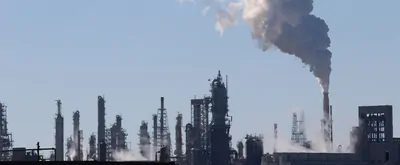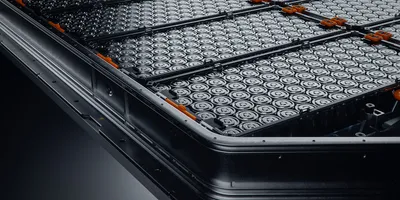The global hydrocarbon business produced about 4,413 million cubic meters of oil and 4,038 billion cubic meters of methane (aka natural gas) in 2020 Liquid hydrocarbons are refined into gasoline for our cars, diesel for trucks and trains, fuel for airliners and transport ships, and a host of other useful products. Methane heats homes and factories, generates electricity, and is feedstock for an array of chemical products, including fertilizer.
Carbon dioxide, methane and nitrous oxide are the unwelcome climate-changing byproducts of this industrial activity—byproducts the world has committed to radically reduce by 2050. On this journey, the world must develop new technologies to reduce the impact of our industrial society. Here are three recent developments showcasing new approaches to improving our “dirty” industrial methods.
Detecting and repairing leaks to reduce emissions
Producing all the oil and gas required by the world economy involves hundreds of drilling rigs and, in some cases, extensive surface facilities. In-situ oilsands production in Canada involves pipes moving steam into the target zones and other pipes carrying the produced bitumen to processing facilities. Along the way, those pipes and facilities sometimes leak methane, referred to as fugitive emissions, which adds to the carbon footprint of the facility. Eliminating methane leaks is particularly important in the global climate change fight as methane contributes about 86 times the warming that CO2 does over the average lifetime of a methane molecule.

Recent leak detection technology, based on LiDAR (Light Detection and Ranging), can be used from an airplane, and covers large areas more cost-effectively than ground-based methods. LiDAR was originally developed to map ground surface topography by bouncing a laser off the ground and timing the return of reflections. More recently, the absorption of laser light by methane can be detected and quantified, allowing for reliable detection of methane leaking from facilities or pipelines.
Armed with detailed information on the size and location of leaks, operators can efficiently repair facilities and reduce this unwanted additional carbon footprint.
Catalysts improve refinery efficiency
Refineries are a vital component in the supply chain from oil field to consumer. Various grades of oil are received at the refinery, and a vast array of products from asphalt to jet fuel are produced. Breaking, or “cracking”, large, complex hydrocarbon molecules into smaller, more useful products is an important part of the refinery process. Cracking can be done in a variety of ways, but in North America, fluid catalytic cracking is a common method.
Fluid catalytic cracking passes heated hydrocarbon feed stock over hot, highly active silica-alumina catalysts. Feedstock is broken down into more desirable products, such as gasoline, while the catalysts can be cleaned and reused. Large quantities of energy are consumed in the process to heat the feedstock and catalyst, and to generate steam used to restore the catalyst for further use.
Improving the effectiveness of the silica-alumina catalysts used in refining would improve the energy efficiency of refiners and reduce their carbon footprint. Effectiveness of catalysts is related to their acidity, which depends on the interaction of aluminum ions with silicon hydroxide molecules in the material. In February 2020, researchers at the University of Sydney announced the creation of a new silica-alumina compound with significantly increased acidity than previously observed. Enhanced acidity resulted from the interaction of two aluminum ions with a single silicon hydroxide molecule rather than the previously observed single aluminum ion. They estimate that use of this new compound could reduce refinery CO2 emissions by 20 to 30 percent by increasing the effectiveness of silica-alumina catalysts.
Greening maritime transport
Bulk carriers traverse all the world's oceans and consume vast quantities of fuel oil in the process. Efforts are underway to replace fuel oil with products like biodiesel and even vegetable oil, but the world fleet remains dependent on bunker oil.
Advanced Lab Management Certificate
The Advanced Lab Management certificate is more than training—it’s a professional advantage.
Gain critical skills and IACET-approved CEUs that make a measurable difference.
A side effect of burning bunker grade oil as fuel is the release of sulfur dioxide. Prior to 2020, bunker fuel could contain as much as 3.5 percent sulfur. Currently, the acceptable standard for sulfur has been reduced to 0.5 percent, and as low as 0.1 percent in some jurisdictions.
Marine fuels are made using blends of available fuel grades, so ensuring that the final product meets the new standards requires an ability to test the blended fuel for sulfur content. X-ray florescence (XRF) techniques are typically used to test for sulfur content when samples of fuel oil are available. Handheld XRF devices are widely available, but samples can also be evaluated in a laboratory setting. To make it easier to test for sulfur content without having to directly sample the fuel, work is also ongoing to develop methods to indirectly measure fuel sulfur content using infrared imaging of ship exhausts. This improved testing and enforcement of low sulfur standards has already had a measurable effect on reducing sulfur dioxide levels along shipping lanes and in harbors around the world.
Along the path to Net Zero, the world will continue to consume an abundance of hydrocarbons, making efficient consumption a necessity. Luckily the world has a variety of opportunities and creative people working to make our economy cleaner.



